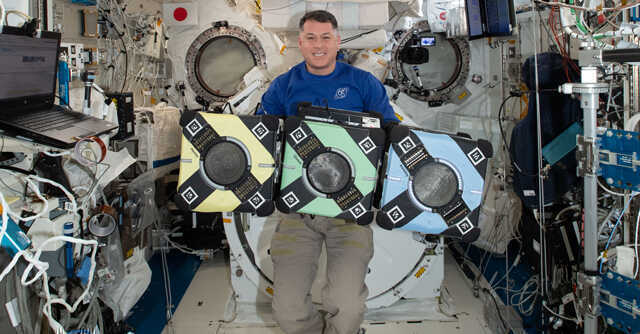
NASA's robots take one further step towards autonomous maintenance in space


Robots belonging to the National Aeronautics and Space Administration (NASA)’s Integrated System for Autonomous and Adaptive Caretaking (ISAAC) project has achieved a new milestone of working autonomously alongside humans to carry out general maintenance and repair tasks aboard the space stations. While the three cubic-foot-sized ‘Astrobee’ robots, called Bumble, Honey and Queen, had previously succeeded in assisting humans to undertake repair and maintenance work aboard the International Space Station (ISS), this is the first time that two of NASA’s Astrobee robots worked fully autonomously.
The achievement is a significant milestone for the use of fully autonomous robots in space, which NASA eventually plans to use as part of its upcoming Artemis manned space missions. Given the unique properties of space, maintenance tasks could turn out to be quite intensive for humans aboard spacecrafts and space platforms — such as the ISS. This is where NASA’s robots come in.
According to the central space agency of the US, these robotic deployments will eventually be tasked with handling regular maintenance procedures aboard long-duration space platforms — such as the upcoming Gateway. The latter is an upcoming lunar orbiter that is expected to serve as a short-stay platform for humans on their way to a lunar base. With Gateway expected to be occupied for no more than six weeks every year, autonomous robots are expected to take over maintenance of the space platform for close to 90% of the year — when it has no visitors.

Previous tests have involved the Astrobee rockets being tested in repair and maintenance of various tasks — such as finding a fault in the ISS’ ventilation system and understanding the cause of a sudden increase in carbon dioxide on it. Bumble, one of the three robots, succeeded in identifying the cause of this issue — albeit with some assistance from humans aboard the ISS.
The latest achievement outdoes the latter, by having Bumble and Honey work autonomously and in tandem with the astronauts on the ISS. Think of this as something similar to what the semi-humanoid robots — CASE and TARS — could do aboard the iconic Endurance in Christopher Nolan’s Interstellar.
While such a science fiction goal is still arguably some time away into the future, the latest achievement is the first step that could help mankind (and our robots) reach such levels of automation, eventually.

